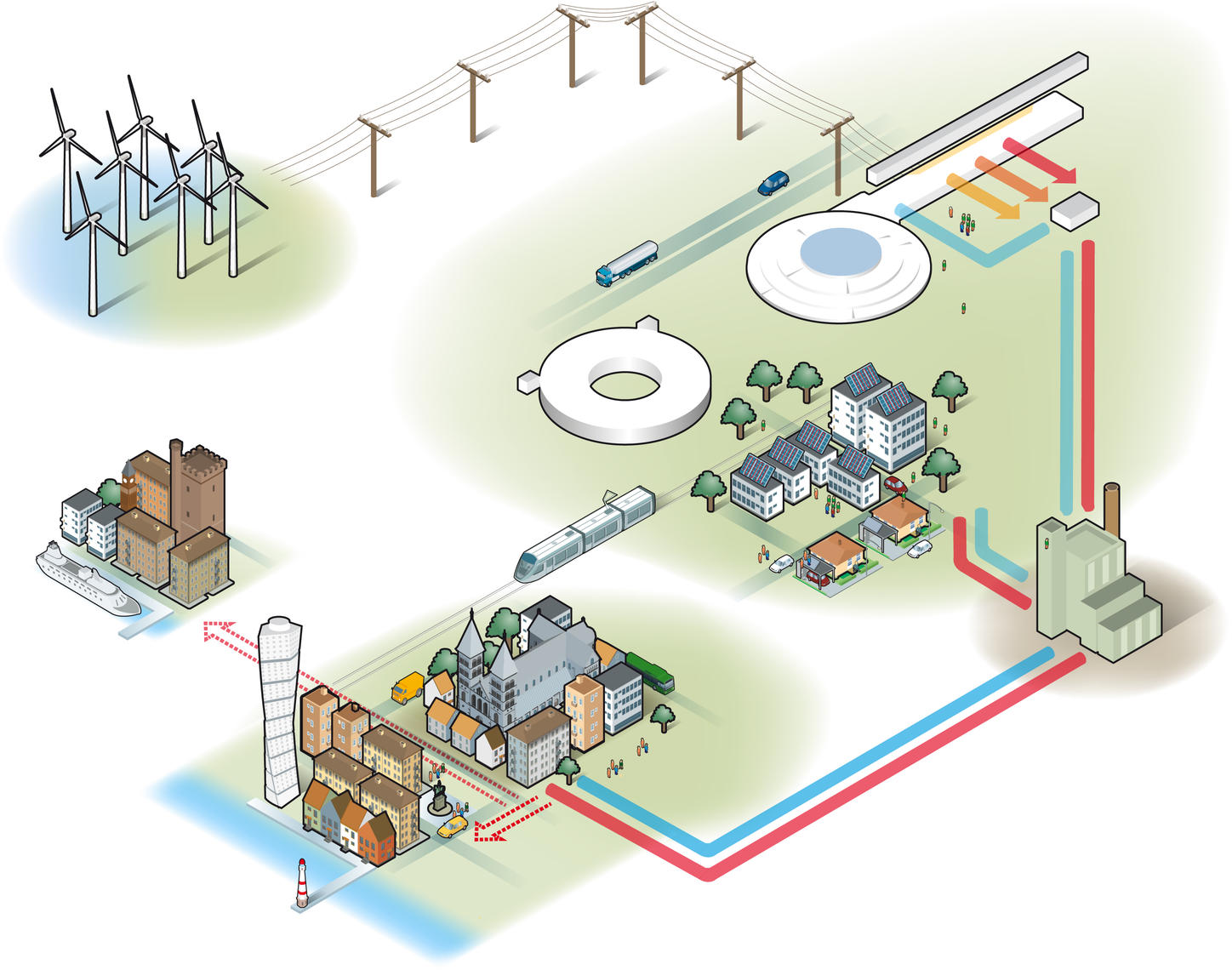
Surplus energy from the materials research facility European Spallation Source (ESS) will be recycled to heat homes and other properties in the surrounding area. ESS has concluded an agreement with E.ON, the energy company who will supply the facility with cooling. E.ON will also handle waste heat from the facility, which will be recycled for district heating.
LUND—The agreement describes how E.ON will supply the ESS with the cooling, purified water and compressed air needed for the research facility to operate, and will utilise the surplus heat, which instead of being released into the air can be used to heat houses and workplaces in the area through the local district heating networks, making ESS one of the world’s most environmentally sustainable research facilities.
“One of the reasons ESS was placed in Lund was our ambitious sustainability goals. We aim, to set a new standard for big science facilities, and recycling our waste heat is key to that. E.ON will be an excellent partner for ESS as we seek to become one of the most environmentally sustainable research centres in the world," said John Womersley, ESS Director General.”
ESS, which will house the world's most powerful neutron source, will provide unique research opportunities in a wide range of areas, such as energy, transport, life science and food. The surplus heat is generated by the machinery used in the facility, for example the cryogenic systems used to generate the liquid helium that is needed to cool the ESS accelerator to a few degrees above absolute zero, and the power supplies used to drive the particle beam. In the cooling process, the surplus heat will be recovered with heat exchangers and used to make hot water which will then be fed into the district heating networks. Recycling the waste heat this way is not just environmentally responsible, it also reduces the operations costs of the facility.
The agreement with E.ON is signed for a 40-year period and will start fully from 2025, with a gradual increase in the energy handled as the research facility’s needs augment. ESS places high demands for a reliable delivery of the cooling needed for operations, to minimize the risk for disruption of the experiments.
"E.ON has been involved in the process of developing the ESS energy management concept, and we have an exciting development work ahead of us regarding this energy solution," said Kent Hedin, ESS Head of Conventional Facilities.
The hot water produced by ESS has different temperature levels and can be used for different purposes. ESS own buildings, such as laboratories and offices, will be heated with water of lower temperature, and some surplus heat will be used for low-temperature district heating networks being built in the Brunnshög area around ESS. ESS already has an agreement with Kraftringen for the high-temperature water, which will be transferred and recycled directly into the existing Lund district heating network.
























